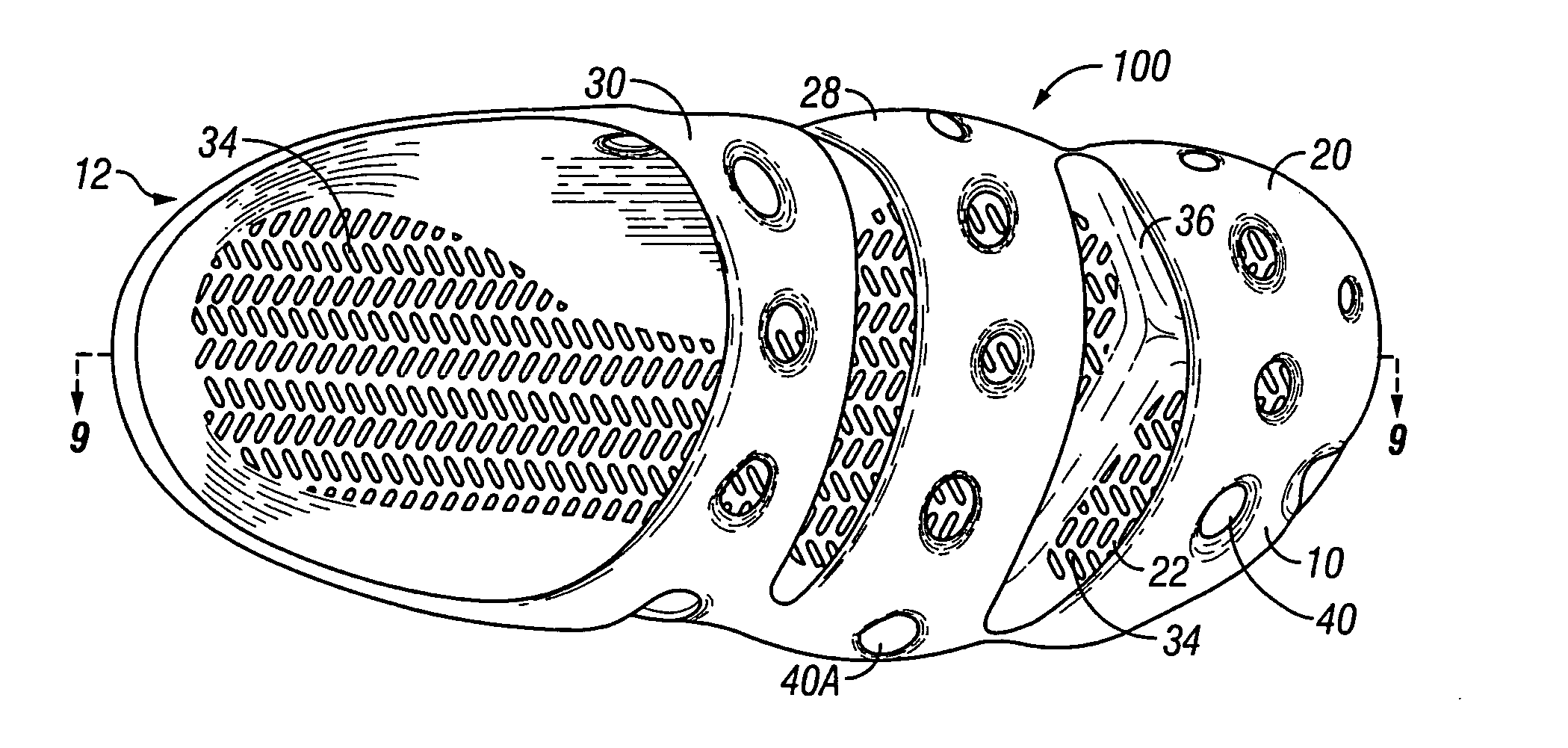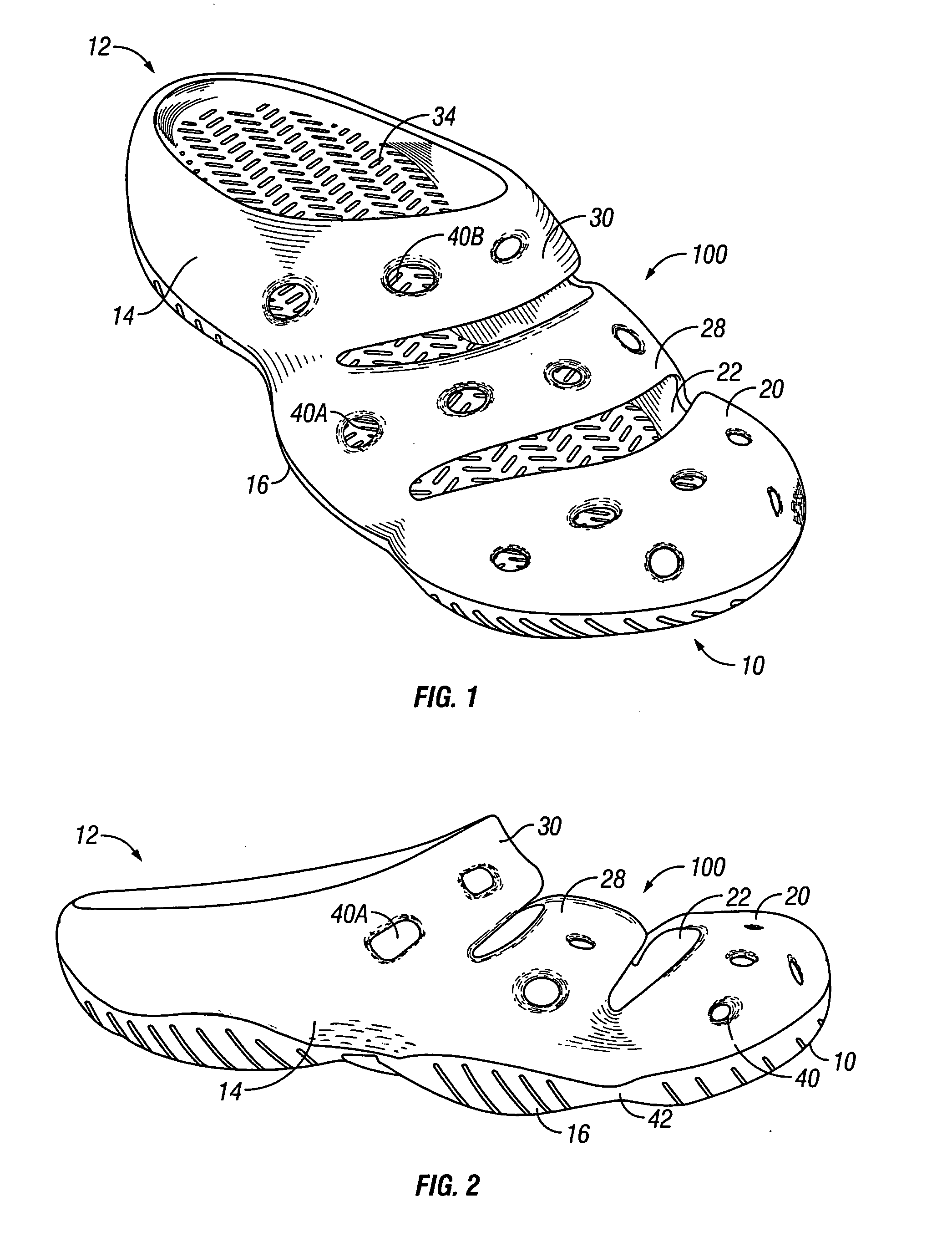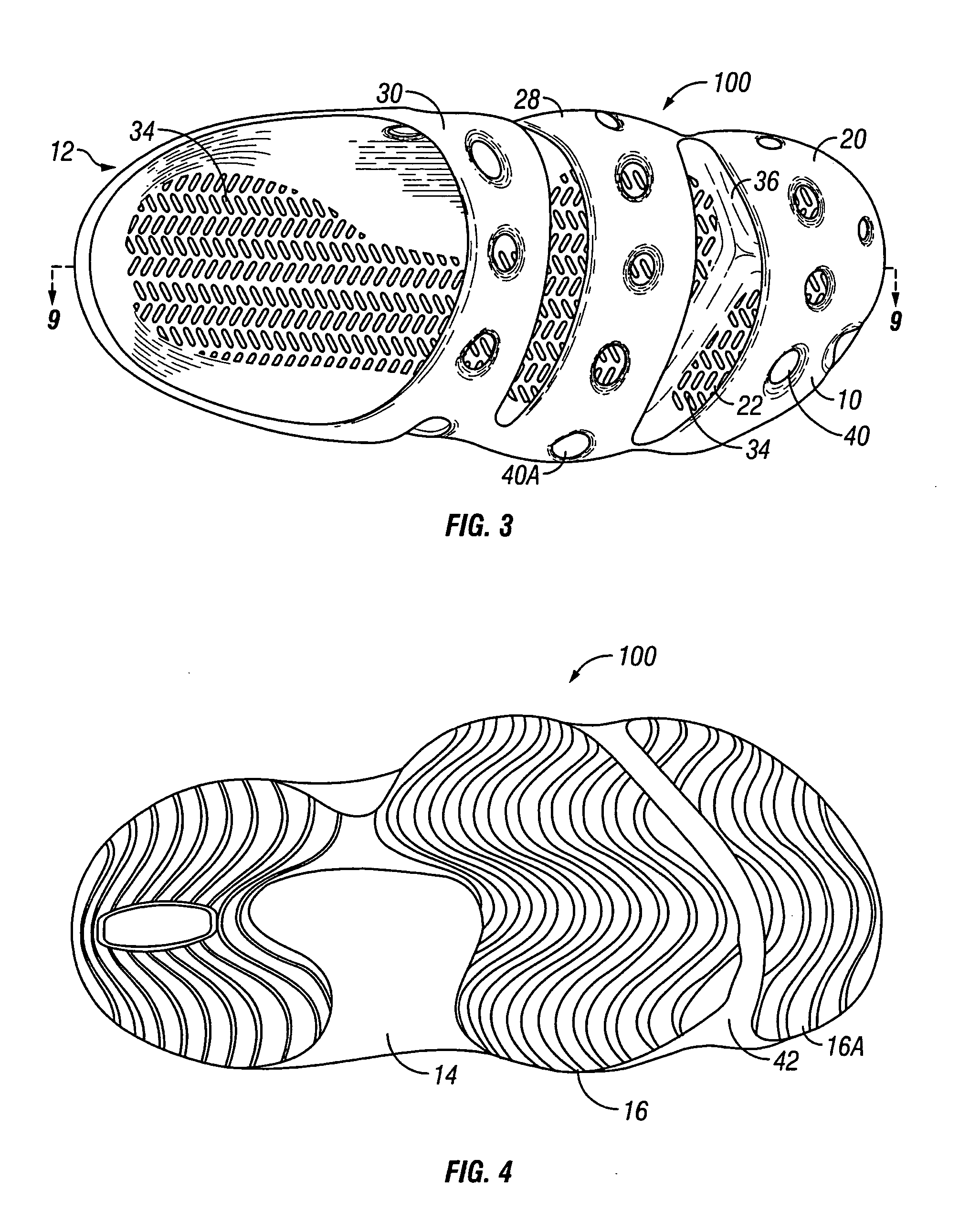Footwear having an enclosed and articulated toe
a technology of articulated toes and footwear, which is applied in the field of enclosed and articulated toes of footwear, can solve the problems of rigidity and inflexibility of molded and carved clogs and like items of footwear, and achieve the effect of high flexibility and simple and adaptability
- Summary
- Abstract
- Description
- Claims
- Application Information
AI Technical Summary
Benefits of technology
Problems solved by technology
Method used
Image
Examples
embodiment 100
[0032] In the embodiment 100 shown, outsole 16 is present in two sections. These correspond to opposite sides of a primary flex region 42 in the midsole 14 where the primary bending of the sole takes place when the clog is being worn. Flex zone 42 is located on the underside of the midsole 14 at a position corresponding to the slot 22 between the toe cap 20 and upper strap 28 on the top side of the midsole.
[0033] Outsole 16 can be formed of rubber or plastic. Usually, since the outsole contacts the ground in use, it is desirable to form outsole 16 from a durable material. Rubber, both natural and synthetic and both blown and solid rubber can find application in outsole 16. In some embodiments, this outsole can be formed of two or more materials with a harder (higher durometer) material being favored for the high wear areas such as the heel and possibly the tip of the toe area and a less durable, more compliant and comfortable material used for the remainder of the outsole.
second embodiment
[0034] Turning to FIGS. 5-8 the footwear articles provided by this invention is shown, This is sandal 200. Sandal 200 has many of the same components present in just-described clog 100. To emphasize the generality and similarity of these two embodiments, the same numbers will be used for the same parts, where possible. As such, sandal 200 has the same toe end 10 and heel end 12 as well as midsole 16 with co-molded toe cap 20. It has outsole 16 which in this embedment is present in three sections, 16, 16A and 16B. Sandal 200 includes a series of straps 46, 48, 50, 52 and 54. These are in place of bands 28 and 30 in clog 100 and serve the same purpose—to hold the sandal on the wearer's foot. Transverse slot 22 is present between the rear edge of toe cap 20 and the front edge of strap 46. a break 42 is present between outsole section 16 and 16A at a location corresponding to slot 22 to provide a bending zone in the sole structure. Sandal 200 includes the same frinctional surface 34 see...
PUM
| Property | Measurement | Unit |
|---|---|---|
| frictional surface | aaaaa | aaaaa |
| shape | aaaaa | aaaaa |
| moldable | aaaaa | aaaaa |
Abstract
Description
Claims
Application Information
 Login to View More
Login to View More - R&D
- Intellectual Property
- Life Sciences
- Materials
- Tech Scout
- Unparalleled Data Quality
- Higher Quality Content
- 60% Fewer Hallucinations
Browse by: Latest US Patents, China's latest patents, Technical Efficacy Thesaurus, Application Domain, Technology Topic, Popular Technical Reports.
© 2025 PatSnap. All rights reserved.Legal|Privacy policy|Modern Slavery Act Transparency Statement|Sitemap|About US| Contact US: help@patsnap.com



